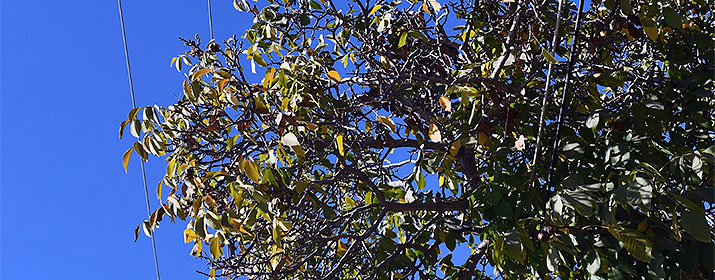
Every summer when temperatures ramp up and energy loads are at their highest, our substation journeymen sweep over specific equipment using a handheld device. They’re looking for “hot spots” using a handheld infrared thermal imaging camera to identify problem areas before they fail.
“Hot spots are areas most likely to fail, causing unplanned outages,” said Tucson Electric Power’s Alec Acuña, Substation Manager.
Failure of just one critical piece of equipment in a substation can cause an outage that requires costly repairs and impacts our customers. Using infrared technology as a preventive measure helps us catch failures before they occur, reducing operating costs and helping to keep our rates more affordable.
“This technology has been around since the 1960s, but has improved greatly with smaller cameras, more features and clearer images,” said David Gonzalez, Transmission & Distribution Maintenance Engineer.
Detecting differences between the temperature of our equipment and the surrounding air can identify loose connections and overloaded conductors. Trained journeymen can point the camera’s crosshairs at capacitors, switches and jumper connections to get a visual temperature reading.
“The hottest spots show up as bright white, while the areas around it may be deep orange, purple or red,” said Chris Orona, TEP Substation Supervisor. “The lighter white areas are conducting poorly, causing conductive material to heat up.”
The images are sent to engineers in our Asset Management and Maintenance Engineering teams to determine whether the hot spot could indicate a potential failure. Engineers consider the amount of load on the equipment, its impact on service reliability, age and other factors to determine its risk level and whether replacement is needed and, if so, how soon.
Last year, journeymen prevented an outage by finding a hot spot on a distribution switch at our Springerville Generating Station. “One of our journeymen did an infrared inspection and sent the images to Engineering, which determined it needed to be corrected immediately,” recalled Orona. “We made repairs and the hot spot was gone.”
The technology is so useful and versatile that it’s also used in the winter to monitor equipment heaters, which keep certain equipment dry during cold, wet weather when moisture can accumulate from condensation and cause rust and damage insulators.
For a small and relatively affordable piece of equipment, this technology plays a powerful role in preventing larger problems.
“These inspections are an important preventive maintenance tool by helping us find hot spots and abnormalities before failures occur,” Gonzalez said. “Depending on the severity of the temperature deviations, corrective action can be taken to ensure equipment is fully functional for greater reliability.”






